If you have never been to Crater Lake National Park in southern Oregon, you’re in for a real treat. If you’ve never been there in winter, you’re in for an exceptional experience, where spectacular is an understatement.
The caldera in Crater Lake National Park is over 5.5 miles (8.8 km) wide and results from the Mt. Mazama eruption about 7,700 years ago. The cataclysmic eruption literally blew the top off an estimated 12,000ʹ tall mountain and after the sides collapsed, the caldera formed. Time and lots of storms eventually filled the depression with water.
Some of the links in this article may contain affiliate links. When you make a purchase using these links, part of the proceeds go to Snowshoe Mag. Additionally, as an Amazon Associate, we earn from qualifying purchases. Please see our disclosure for more details.
Winter in Crater Lake National Park
To reach Crater Lake National Park, head for the Annie Spring southern entrance off State Highway 62, the only open entrance in winter. The southern entrance is a 2½-hour drive from Bend, a 1½-hour drive from Medford, and forty-five minutes from Klamath Falls, depending upon road conditions. However, the drive is a good reminder. Always check the park’s website or call the Visitor Center for current road and weather conditions. Winter storms may be fast-moving and roll in, completely obscuring the lake.
In winter, Crater Lake National Park receives an annual average snowfall of 42 feet (12.8 m). According to the National Park Service, the park has weather data from 1931. In the past, there was annual average snowfall of 44 feet (13.4 m), but that average has dropped over the last couple of decades.
Moving all that snow is a full-time chore, and the park does a great job at plowing to keep the road open from the Annie Spring Entrance Station up to Rim Village. However, make sure to equip your cars for snow or icy conditions; traction tires or chains are recommended.
Officially, the winter season at the park is November through April, but winter can come early and stay late. The cool takeaway is that a spring snowshoe outing with warmer weather and longer daylight hours is possible. Most of the park’s 33-mile-long (53 km) Rim Drive is closed in winter, except for a 3-mile (4.8 km) stretch from Park Headquarters up to the caldera’s edge at Rim Village. And here is where the adventure begins for snowshoers and Nordic skiers.
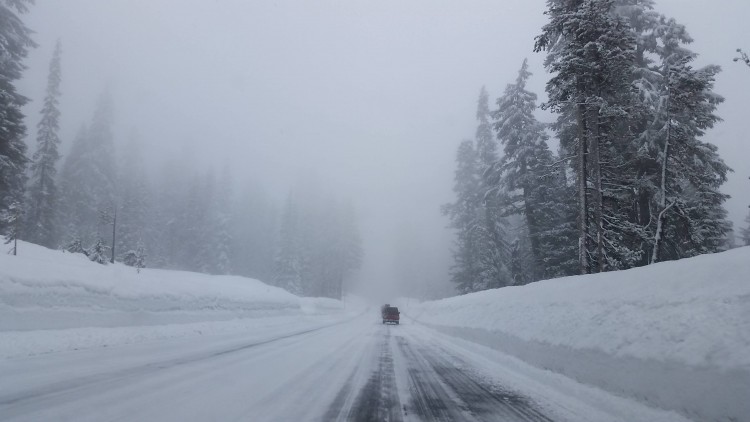
Drivers need to be prepared for winter conditions when driving to Crater Lake National Park. Photo: Damian Fagan
Snowshoeing at Crater Lake National Park
Crater Lake National Park offers a variety of trails for all levels of snowshoe enthusiasts.
West Caldera Rim (Easy)
Those wanting a leisurely stroll with great views of the lake, then snowshoeing along the caldera rim at Rim Village (7,100ʹ) is the ticket with level terrain and fantastic views. Keep in mind that the park closes most of the buildings in winter, including the historic Crater Lake Lodge and Rim Visitor Center.
However, just witnessing the changing moods as the light sweeps across the lake or clouds spill into the caldera is a delight. Along this 0.5-mile (0.8 km) section of the rim, views of the crystal blue lake, one of the deepest lakes in the U.S., reaching 1,949ʹ, are outstanding.
Read More: Definitive Guide: How To Choose Snowshoes for Your Needs
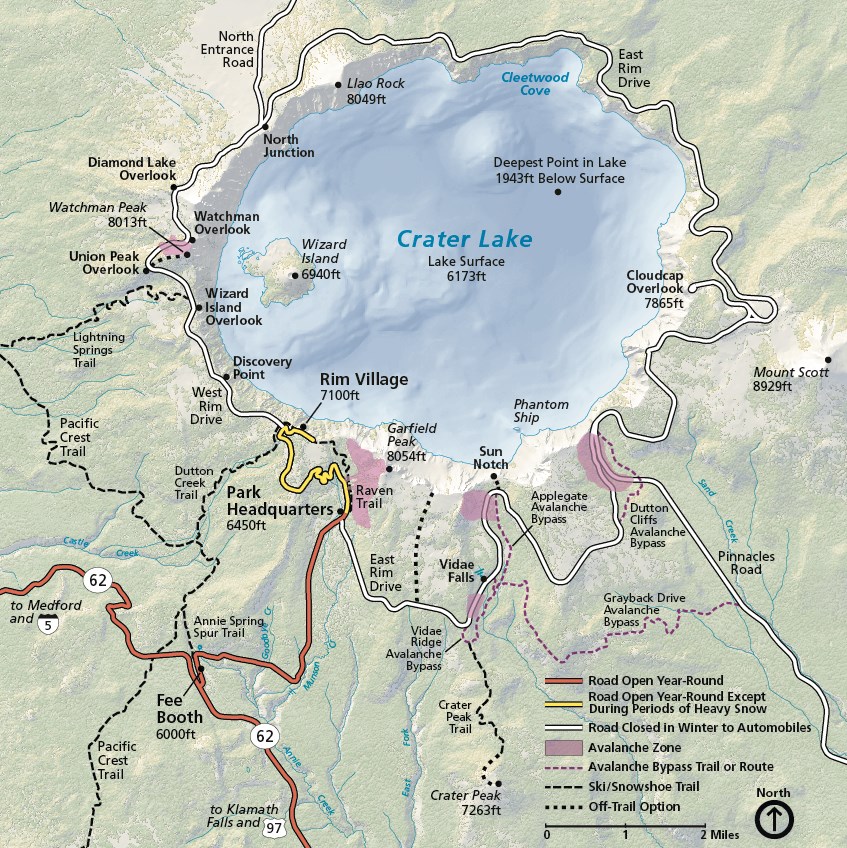
Snowshoeing opportunities for all levels abound in Crater Lake National Park. Photo: National Park Service
Hemlock Loop (Easy)
If you’re up for exploring an old-growth forest of mountain hemlock and red fir, head out on the Hemlock Loop trail, 1.6 miles (2.5 km) long ‘shoe. On this trail, the ancient trees bear testament to the seasons. In non-pandemic years, Rangers lead snowshoe tours through this area.
Discovery Point (Easy)
At Rim Village, most snowshoers and skiers head out along the West Rim Drive to gain incredible views of the lake, Wizard Island, and the glacier-carved valleys on the east rim of the caldera.
Discovery Point, 1.2 miles from Rim Village, offers an outstanding vista of Wizard Island, the silent “volcano within a volcano.” This remnant cinder cone erupted about 7,300 years ago in the newly-created caldera base, then became an island as rain and snowmelt filled the lake. A sharp pair of eyes will be able to pick out the boathouse on the island where the summer tour boats are stored for winter.
Read More: Snowshoeing for Beginners: The First-Timer’s Guide
Overlooks along West Rim Drive (Moderate)
From Discovery Point, the trail continues along the closed West Rim Road. It proceeds to other views of Wizard Island and Union Peak (7,698’), the core of an ancient volcano that glaciers stripped bare. Then, the road begins a steady climb to the Watchman Overlook.
The trek to the Watchman Overlook (3.9 miles/ 6.3 km), the Diamond Lake Overlook (4.5 miles/ 7.2 km), or North Junction (6.0 miles/ 9.6 km) are all solid day outings from Rim Village.
Forested Trails near West Rim Drive (Advanced)
Experienced snowshoers may also want to explore trails such as the Pacific Crest Trail, Dutton Creek, or Lightning Springs. These trails require route-finding skills as they are not marked and are used infrequently. These forested trails may offer a better snowshoe option on stormy days than getting wind blasted along the exposed rim.
Read More: What To Bring When Snowshoeing: Top Accessories for the Day Hiker
Raven Trail (Advanced)
When the main park road from the Visitor Center to Rim Village is closed but conditions are good, snowshoe the Raven Trail to Rim Village. The route crosses over the runout of an avalanche shoot for about 100 feet (30.5 m), so use caution when crossing this spot.
Only one mile long and marked with blue diamonds, the trail gains 610 feet (186 m) in elevation. It’s one of that high-reward snowshoe treks because you might have the entire lake to yourself or with only a few other people!
East Caldera Rim (Advanced)
Another high-reward snowshoe is the caldera rim climb off of the East Rim Drive. From Park HQ, follow the steady climb of the road to a point known as “the Summit of the First Climb,” which is about 1.8 miles (2.9 km) and 400 feet (122 m) higher than HQ.
At this point, the road drops down towards Vidae Falls and Sun Notch, but snowshoers can turn north away from the road and cut a steady uphill track to the ridge between Garfield Peak and Applegate Peak. The ascent here is about 950 feet (289.5 m) and 1.4 miles (2.2 km) long and crosses alpine meadows and isolated groves of trees to the crater’s lip. Outstanding views and a top-of-the-world feeling are the rewards of this aerobic ascent.
Read More: 8 Reasons Why Winter Hiking Rocks
Sun Notch (Advanced)
If you continue along East Rim Drive, past this Summit of the First Climb point, the road crosses an avalanche area. At this point, snowshoers and skiers have to take the Applegate Avalanche Bypass Route to avoid this hazard (maps of the route are available at the Visitor Center).
Beyond the bypass is the turnoff to Sun Notch, the other “first” spot to view the lake along East Rim Drive. At 4.5 miles (7.2 km), the unmarked route leaves the road at the “sweeping right-hand turn.” It then heads up through the forest for a quarter-mile (0.4 km) and 505 feet (154 m) more of elevation gain to the viewpoint.
The viewpoint has an excellent view of Phantom Ship, one of the oldest geologic formations in the park. Rising from the lake, this “ship” seems caught in a perpetual tack with jagged rocky sails, and you half expect to see Captain Jack Sparrow barking orders at some motley crew.
Snowshoeing Tours
Mark Cobb, the owner of Sky Lakes Wilderness Adventures, leads day snowshoe trips to Crater Lake National Park in winter. He also offers an epic circle of the crater, a three-day snow camping trip that is sure to be a Bucket List item for any adventurers.
“We go in late April when the days are a little longer and the weather a little more stable,” said Cobb. The status of the pandemic will dictate the next offering of this fantastic trip.
Winter Trail Tips for Crater Lake National Park
During “normal” years, the park has a volunteer Ski Patrol that sets tracks and helps patrol the trails. Most of the park trails are not marked except for maybe a trailhead sign or the Raven and Hemlock trails.
So, be prepared and obtain one of the park’s winter trail maps upon entry. Weather and avalanches aren’t the only dangers for winter wanderers. Be aware of overhanging snow cornices formed from wind whipping and piling up snow along exposed sections of the trail and rim. Thus, adventurers need to make sure they are on solid footing when posing for photographs on the caldera rim. It’s a long, rough roll down to the lake.
The park charges a $20 entrance fee (good for 3 days), but visitors with an annual or lifetime pass to get in for free. For snowshoe rentals, call Mark at Sky Lakes Wilderness Adventures in Chiloquin.
Read More: Safety First: Snowshoeing Hazards and How To Avoid Them
Après-snowshoeing
Your final destination will determine where to stay and what is open.
Fort Klamath
In Fort Klamath, close to the park, is a funky little spot called Jo’s Motel with a great, and out of place, organic grocery store attached to the motel. If you like it quiet, this is the place.
Chiloquin
Chiloquin, located just off Highway 97, has limited dining but several great Airbnb locations, including this awesome cabin available from Mark at Sky Lakes Wilderness Adventures. Let yourself fall asleep to the whispers of the Williamson River as it slips past the town.
Klamath Falls
Additionally, Klamath Falls has a great selection of hotels and motels, including the Best Western Plus Olympic Inn, with their wildlife and waterfowl lobby complete with local mounts. Ask for a room facing the back.
Though downtown K-Falls has seen better days, the Thai Orchid Café on Main Street serves up delicious curries and noodles dishes perfect after a day at play in the snow. And if you’re looking for vegetarian options in this ranching community, head to the Terra Veg Vegan Eatery, also downtown.
For those heading to the Running Y Ranch Resort on the west side of Upper Klamath Lake, there’s the Ruddy Duck Restaurant, which currently is open only for take-out.
Read More: Historic Union Creek Resort Combines Forest Setting, Rustic Charm, Modern Comfort
Crater Lake National Park Facts (Winter)
Location: 45 miles north of Klamath Falls off Highway 62 (elevation 6,340 feet at Park HQ)
Snowshoe Trails: 33+ miles
Average annual snowfall: 504 inches
Record snowfall: 1950, 903 inches
Mt. Mazama eruption: 42 times more powerful than the 1980 eruption of Mt. St. Helens
For more information, visit the Crater Lake National Park website, Sky Lakes Wilderness Adventures, and Discover Klamath.
Would you visit Crater Lake National Park in winter? If you have already, what are some of your favorite snowshoeing trails and apres options? Please share your thoughts with us in the comments below.
This article was first published on February 9, 2021, and was most recently updated on April 6, 2023.
Read Next:
Let it Snow! 5 Places You Can Still Snowshoe in Oregon
Oregon Winter Sports Resorts
High Country Trails Near Bend, Oregon
Snowshoeing Dress Code: Tips for What Clothing to Wear

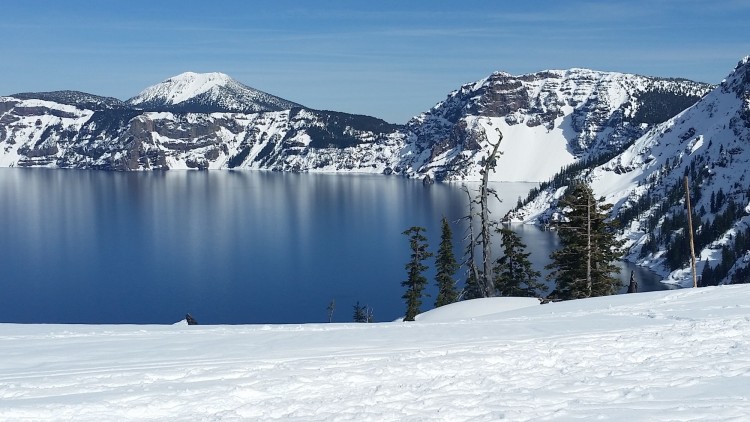
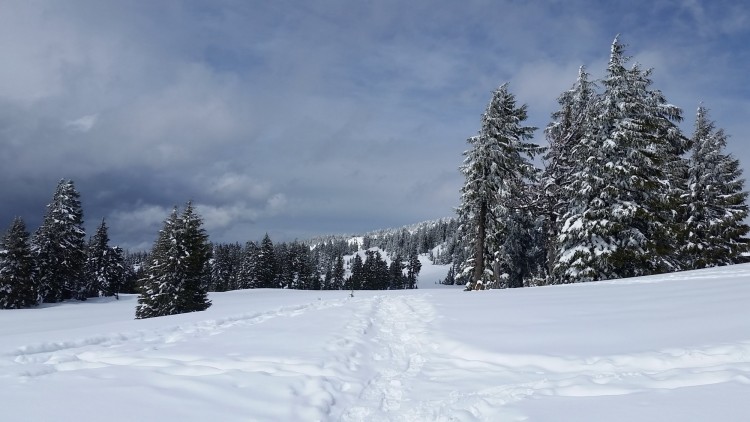
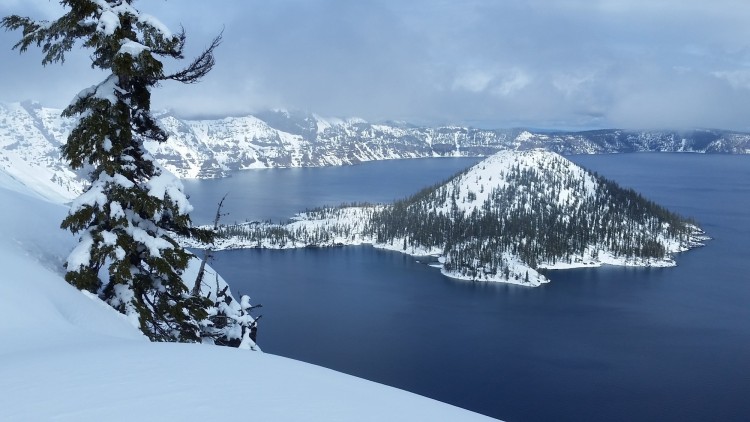
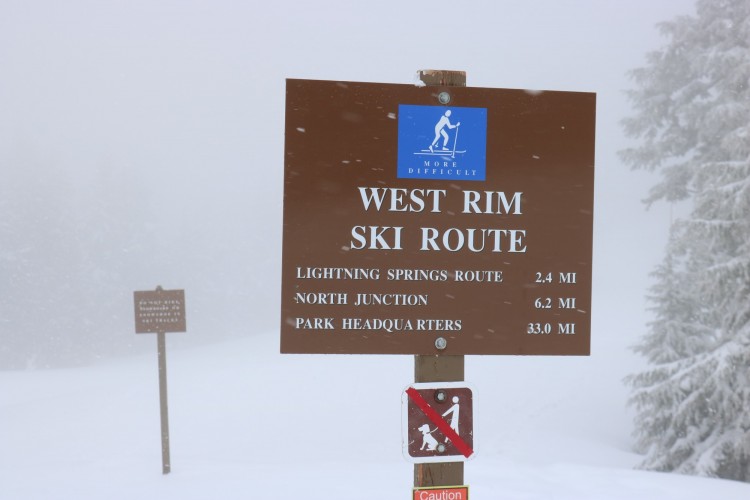
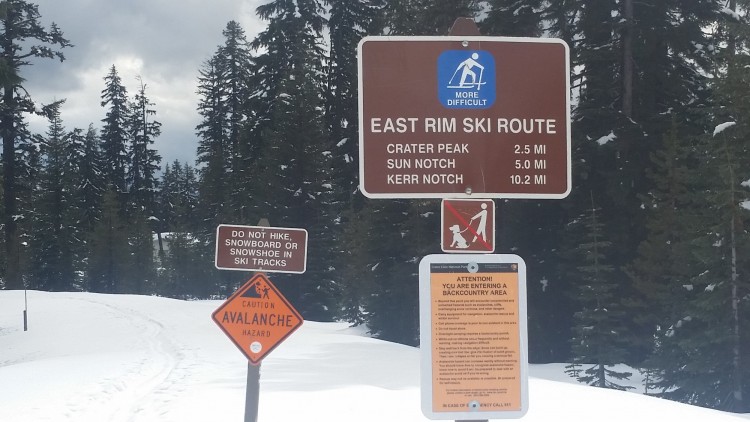
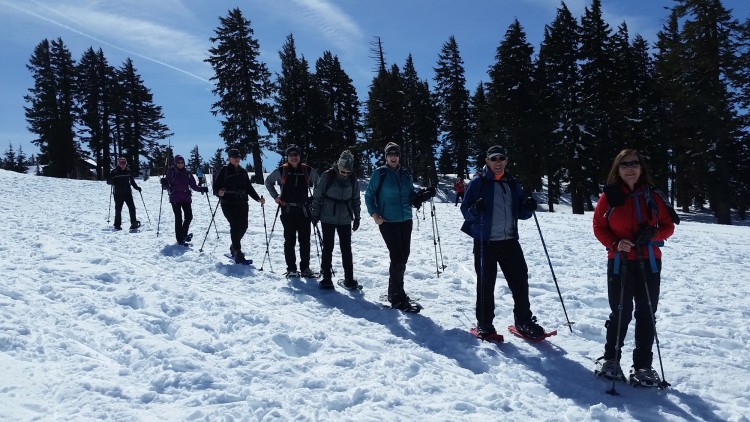
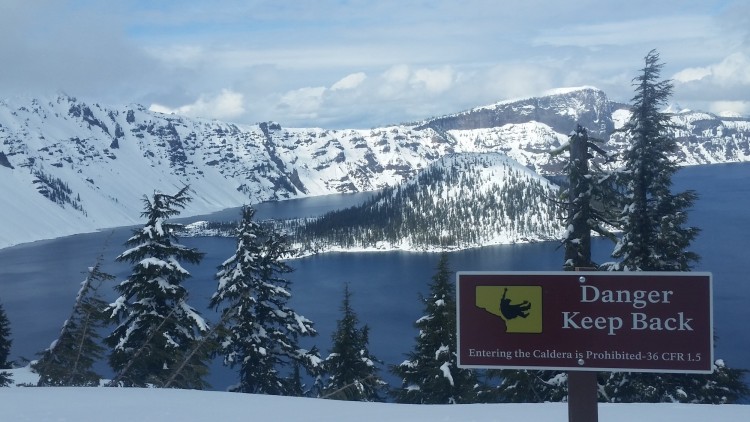

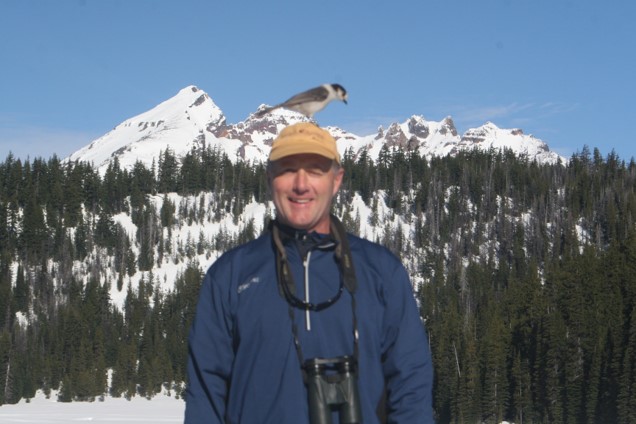
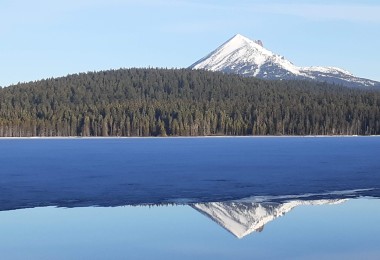
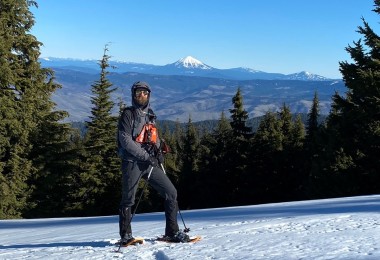
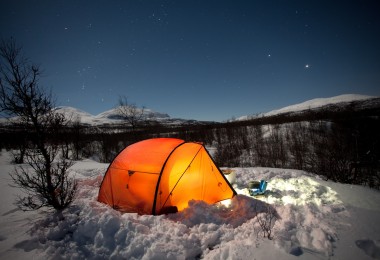


Leave a Comment